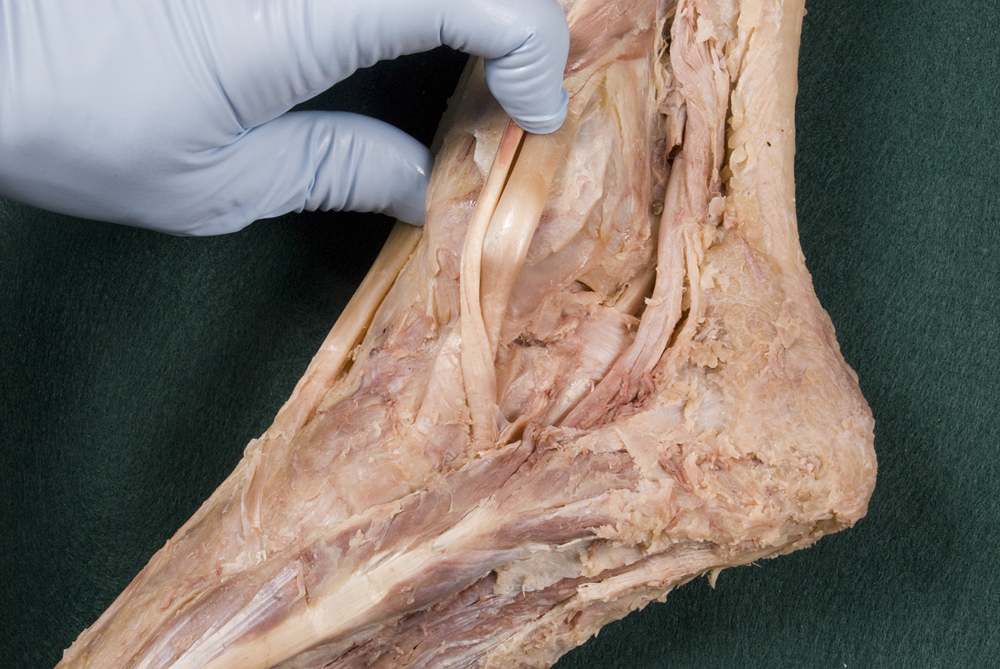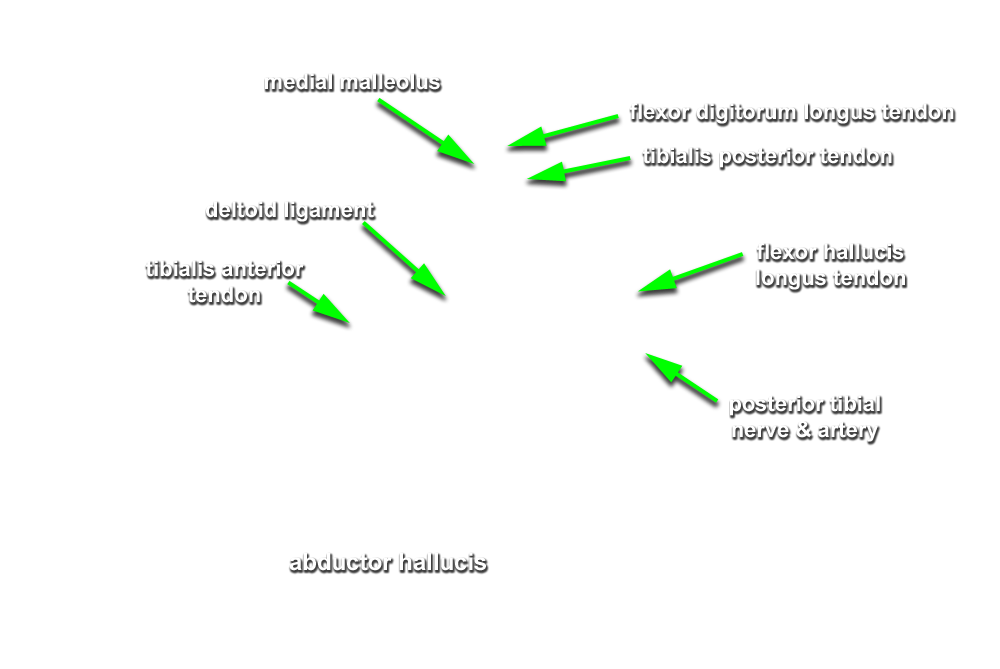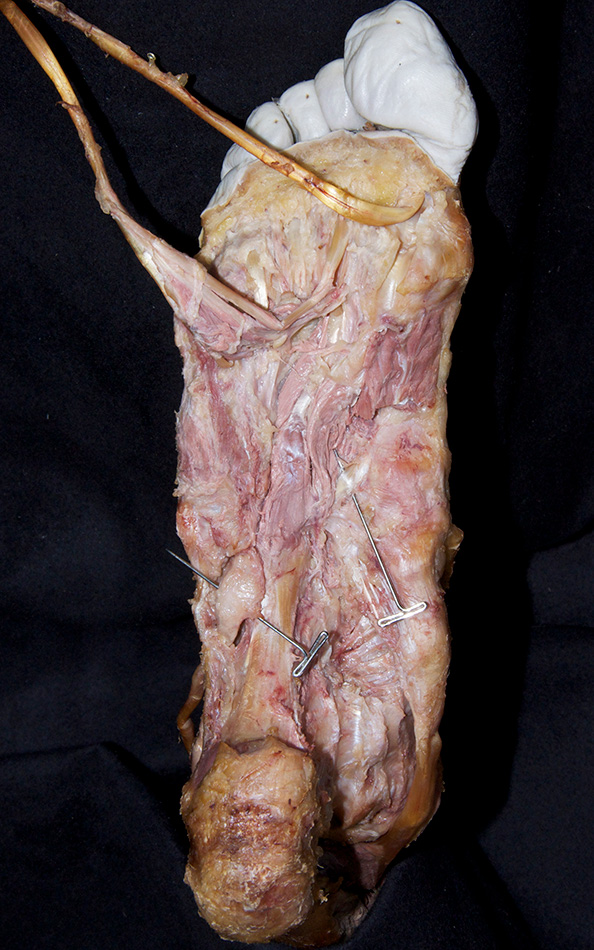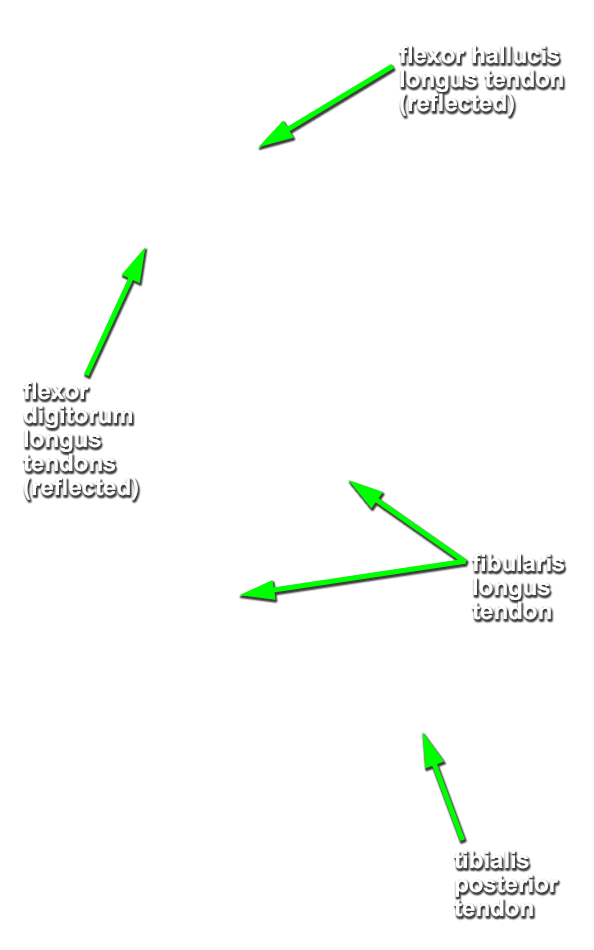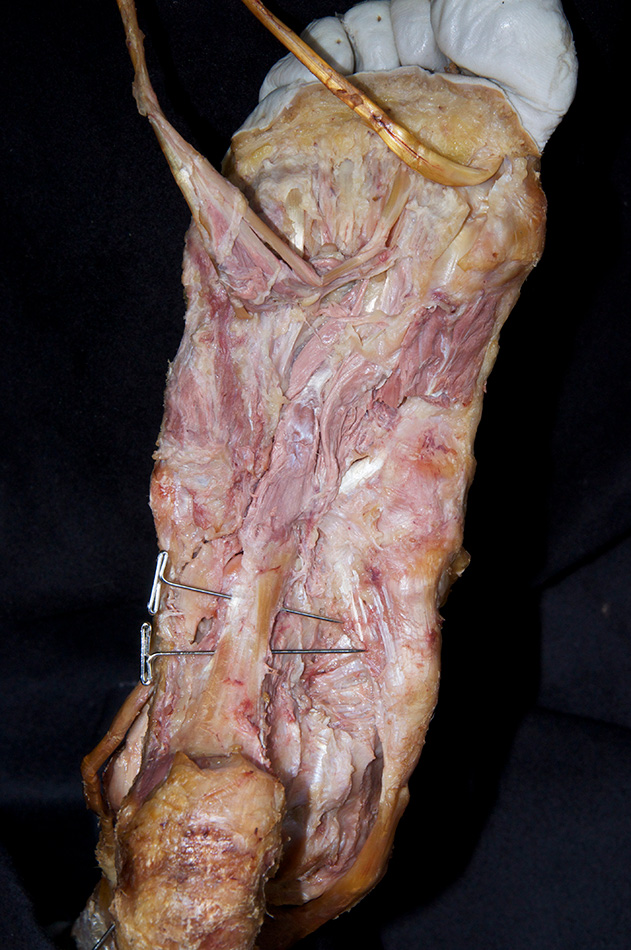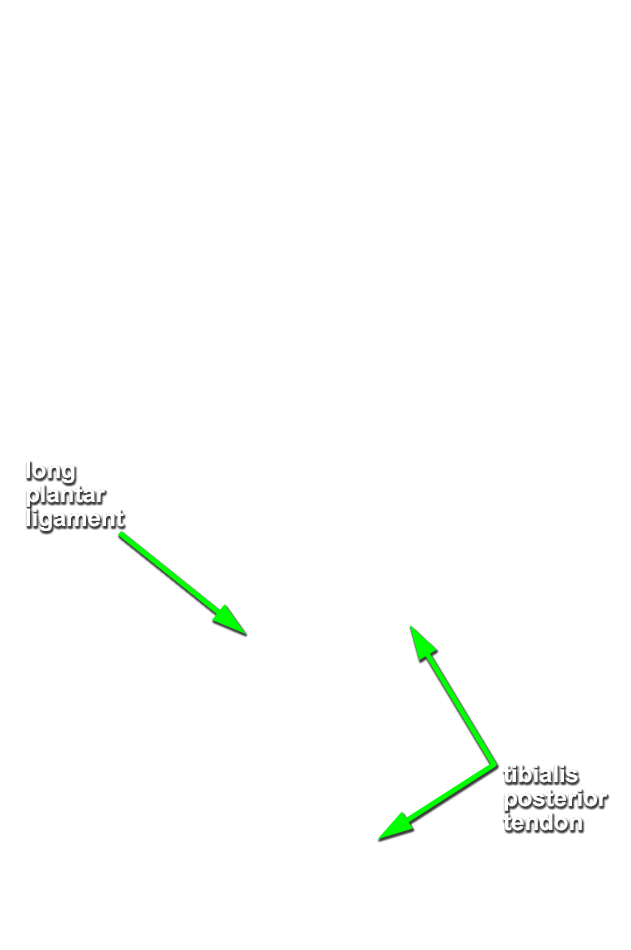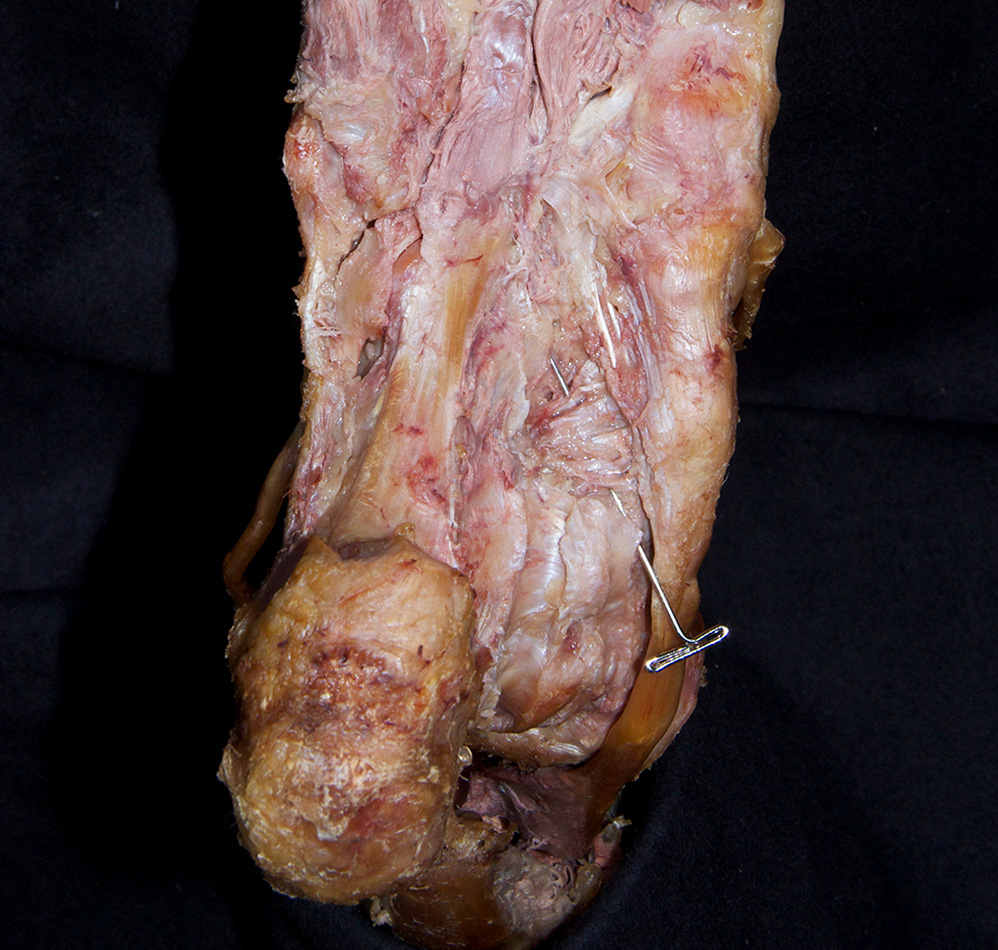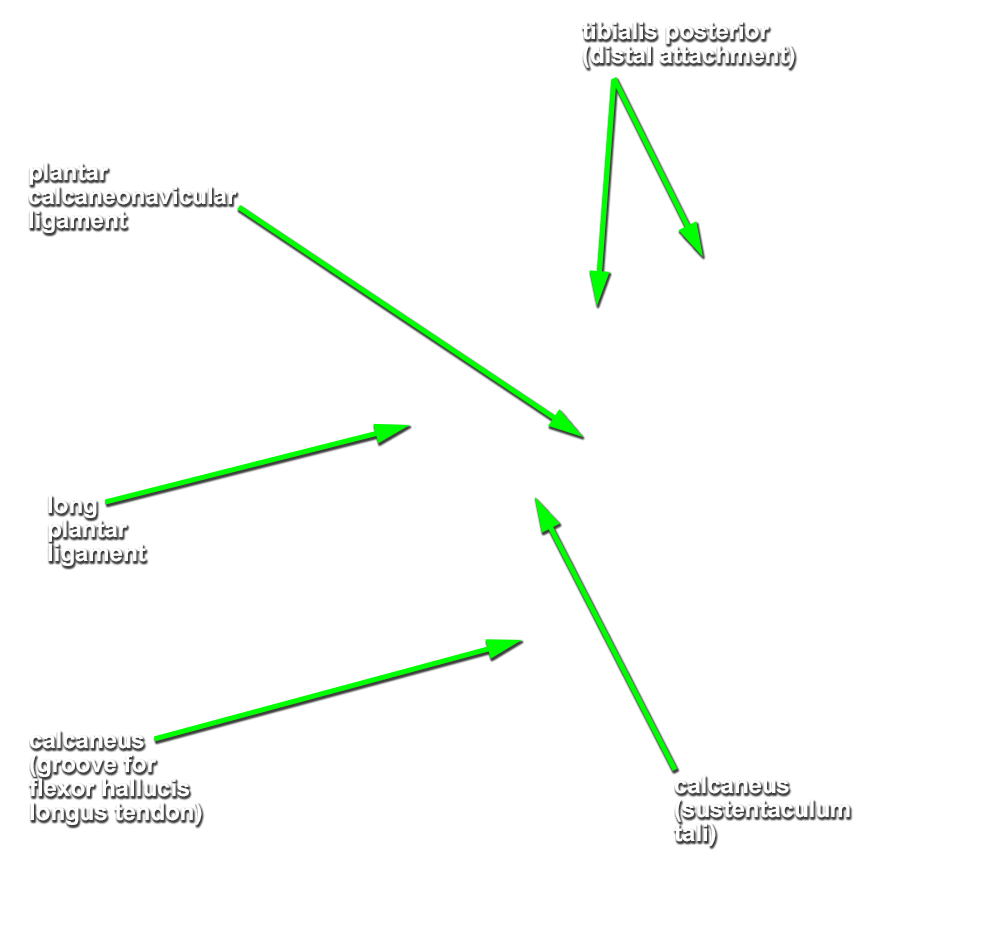- Identify the tendons of the tibialis posterior, flexor hallucis longus, flexor digitorum longus and fibularis (peroneus) longus muscles. (G 6.75C, 6.77C and 6.91A;N 515, 520 and 521;Gl 33.15B, 33.22B and 33.9)
- Identify the distal portions of the fibularis (peroneus) longus tendon. Identify the long plantar ligament covering the intermediate portion of the fibularis (peroneus) longus tendon. Identify the calcaneonavicular (spring) ligaments. (G 6.91A;N 515;Gl 33.22B and 33.9)
Important Relationships
- The
flexor hallucis longus muscle (tendon) passes
inferior to the calcaneus (sustentaculum tali).
The sustentaculum tali is not labeled. It is the calcaneal projection just anterior-lateral to the tendon in the cross section. - In the deep foot, the flexor digitorum longus muscle (tendon) passes inferior to the flexor hallucis longus (tendon).
- The plantar calcaneonavicular (spring) ligament is positioned inferior to the talus (head).
- The peroneus longus muscle (tendon) passes deep (superior) to the long plantar ligament.
